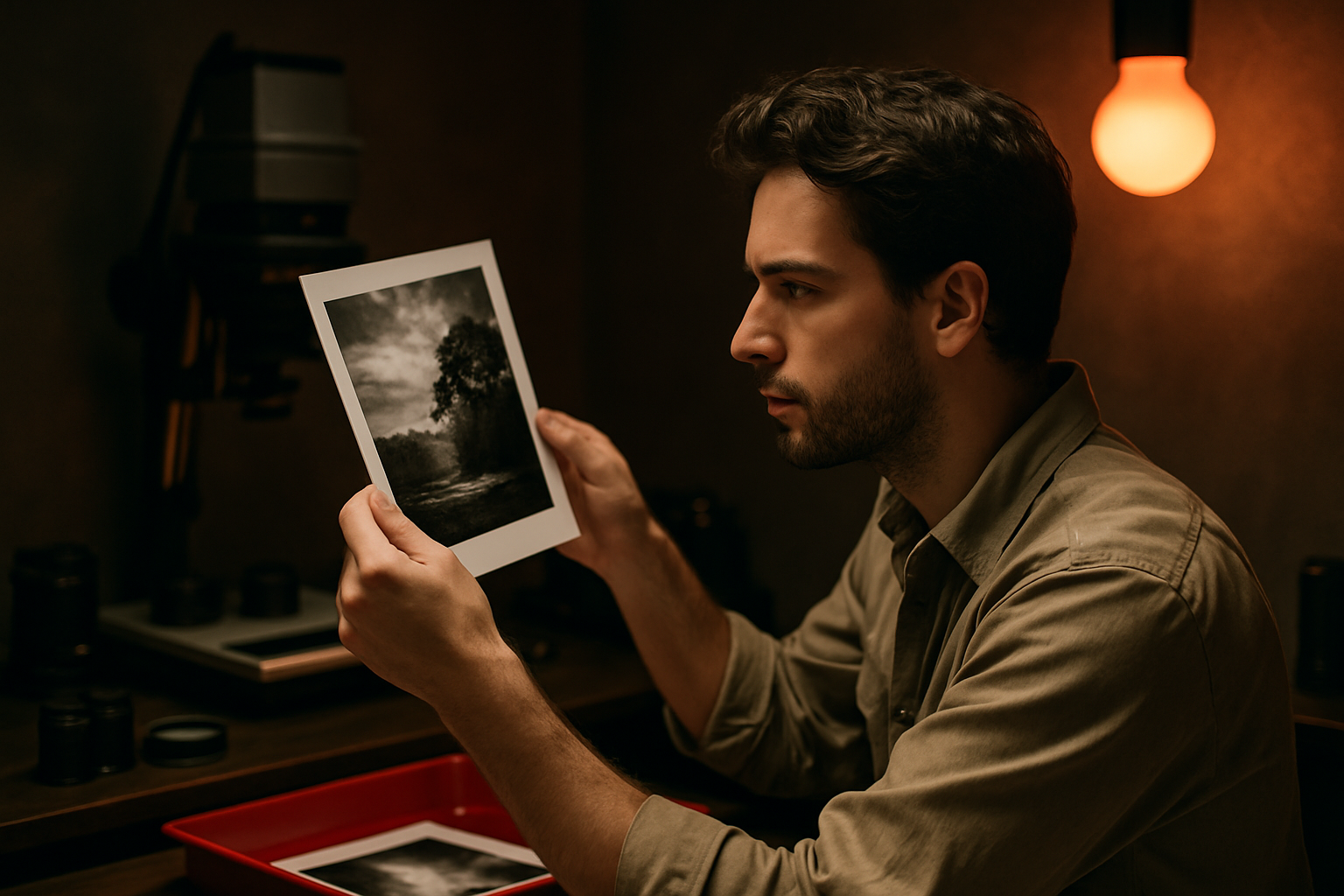Analog Photography's Digital Renaissance
In an era dominated by digital imagery, a surprising trend has emerged: the resurgence of analog photography. This nostalgic return to film cameras and darkroom processes is not merely a hipster fad, but a significant movement reshaping the landscape of contemporary visual arts. As digital technology continues to advance, paradoxically, more photographers are embracing the imperfections, tactile nature, and deliberate process of analog methods. This article explores the factors driving this renaissance, its impact on the art world, and the unique aesthetic it brings to modern visual culture.

Slowing Down in a Fast-Paced World
The methodical process of analog photography stands in stark contrast to the instant gratification of digital. Photographers must carefully consider each shot, as film and development costs limit the number of exposures. This constraint fosters a more thoughtful approach to image-making, encouraging photographers to slow down and truly engage with their subjects and surroundings. The waiting period between capturing an image and seeing the result also adds an element of anticipation and discovery that many find exhilarating in our age of immediate feedback.
Tangibility in a Digital Age
As our lives become increasingly digitized, the physical nature of analog photography offers a welcome respite. The tactile experience of loading film, adjusting manual controls, and working in a darkroom provides a connection to the craft that many find lacking in digital workflows. Furthermore, the resulting prints and negatives are tangible objects that can be held, displayed, and passed down through generations, offering a permanence that digital files often lack.
Artistic Expression and Experimentation
Analog photography opens up a world of creative possibilities that extend beyond the capture of images. Darkroom techniques like dodging, burning, and chemical manipulation allow for unique artistic expressions that are difficult to replicate digitally. Additionally, the variety of film stocks available, each with its own characteristics, allows photographers to choose a medium that best suits their vision. This level of control and experimentation has attracted artists looking to push the boundaries of photography as a medium.
Education and Community Building
The resurgence of analog photography has led to a renewed interest in photographic education. Workshops, classes, and community darkrooms have sprung up in cities around the world, fostering a sense of community among enthusiasts. These spaces not only teach the technical aspects of film photography but also serve as hubs for creative exchange and collaboration. The sharing of knowledge and resources has been crucial in keeping analog processes alive and accessible to new generations of photographers.
Preservation of Photographic Heritage
As digital technology rapidly evolves, there are growing concerns about the long-term preservation of digital images. In contrast, properly stored film negatives and prints can last for centuries. This longevity has led many institutions and archives to reconsider the importance of analog processes in preserving visual history. The revival of analog photography is thus not just about creating new images, but also about maintaining a connection to photographic heritage and ensuring its continuity into the future.
Challenges and Adaptations
Despite its growing popularity, analog photography faces significant challenges. The discontinuation of certain film stocks and the closure of processing labs have made it more difficult for photographers to access necessary materials and services. However, this has also spurred innovation, with new companies emerging to fill these gaps and established manufacturers reintroducing discontinued products. The analog community has shown remarkable resilience and creativity in adapting to these challenges, often finding new ways to combine analog and digital processes to overcome limitations.
Impact on the Art Market
The renewed interest in analog photography has had a notable impact on the art market. Vintage prints and rare film cameras have seen a surge in value, while contemporary artists working in analog mediums are gaining recognition in galleries and museums. This trend has also influenced the way digital images are presented, with many photographers choosing to emulate film aesthetics in their digital work or opting for traditional printing methods to give their digital captures a more analog feel.
Looking to the Future
As analog photography continues to gain momentum, its influence extends beyond the realm of fine art. The aesthetic and philosophy of analog processes are informing product design, fashion, and even digital technology. While it’s unlikely that analog will ever fully replace digital in mainstream photography, its resurgence demonstrates a desire for more tactile, thoughtful, and human-centered approaches to image-making. As we move forward, the interplay between analog and digital techniques promises to yield exciting new forms of visual expression, bridging the gap between tradition and innovation in the ever-evolving world of photography.





